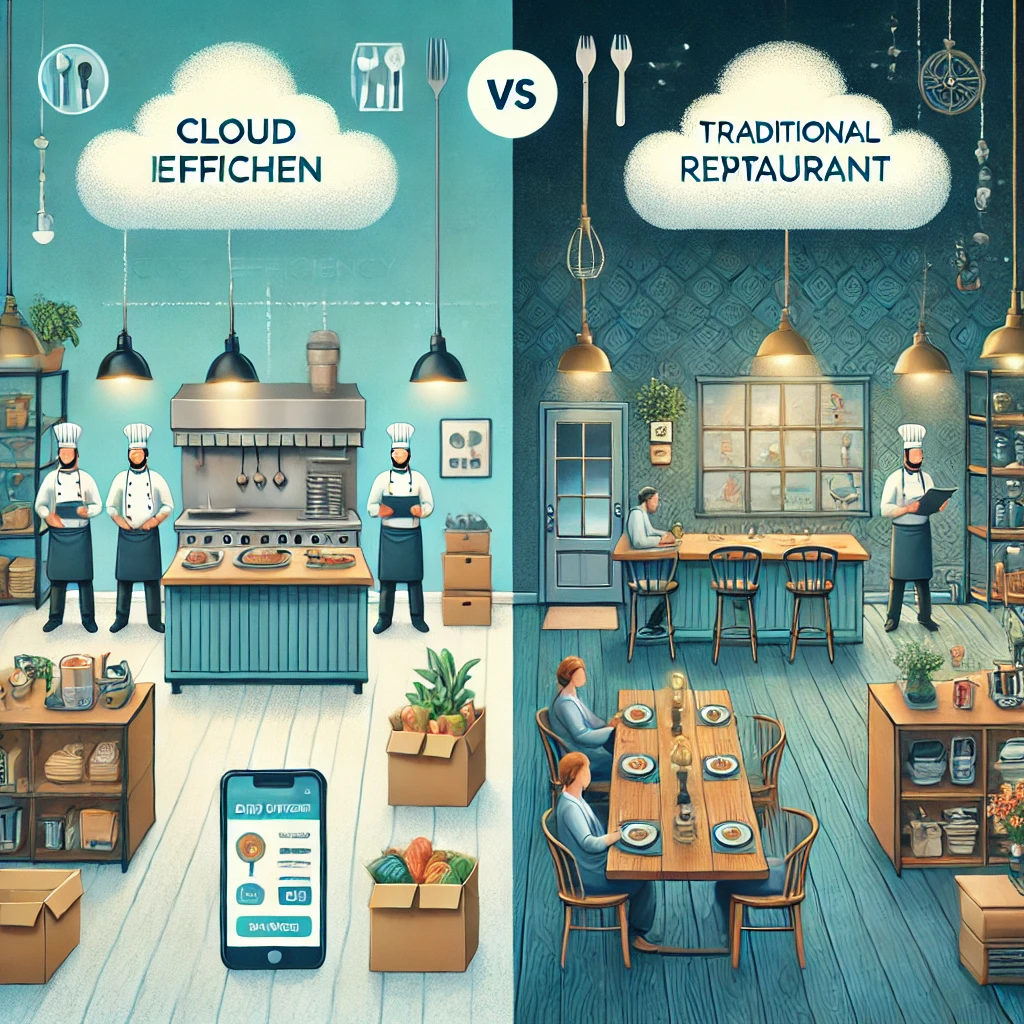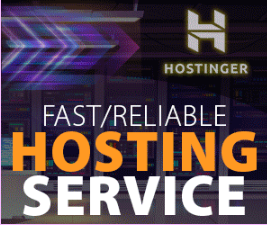Table of Contents
ToggleIntroduction
The food industry landscape has evolved rapidly, with cloud kitchens gaining popularity alongside traditional dine-in restaurants. Each model offers unique advantages and challenges, from cost structures to customer engagement. In this article, we’ll break down the key differences between cloud kitchens and traditional restaurants to help you decide which one is the best fit for your food business goals.
1. What Is a Cloud Kitchen?
A cloud kitchen is a delivery-only restaurant model where meals are prepared exclusively for online orders. It eliminates the need for dining spaces or walk-in customers, focusing entirely on food preparation and delivery through apps like UberEats, DoorDash, or the restaurant’s own platform. This business model helps lower operational costs by removing the overhead associated with physical locations and front-of-house staff.
2. What Is a Traditional Restaurant?
A traditional restaurant offers in-person dining alongside takeout and delivery services. These establishments focus on customer experience through ambiance, service, and food presentation. Success often depends on prime locations and well-trained front-of-house staff to create a memorable dining experience that encourages repeat customers.
3. Key Differences Between Cloud Kitchens and Traditional Restaurants
Both models have distinct differences that affect operations, scalability, and customer engagement:
- Operating Costs: Cloud kitchens have lower staff and rental costs compared to traditional restaurants.
- Customer Interaction: Traditional restaurants offer in-person interactions, while cloud kitchens rely solely on online orders.
- Scalability: Cloud kitchens are easier to scale with remote locations, while traditional restaurants require significant capital investment for expansion.
- Location Dependency: Traditional restaurants need high-traffic areas to attract customers, but cloud kitchens can operate from non-prime locations.
4. Costs Comparison: Cloud Kitchen vs Traditional Restaurants
The cost structure is a critical factor when choosing between the two models.
- Cloud Kitchen Costs:
- Lower rent due to remote locations.
- Minimal staff with no need for front-of-house operations.
- Delivery platform commissions impact profit margins.
- Traditional Restaurant Costs:
- High rental expenses for prime locations.
- Requires both kitchen and front-of-house staff.
- Utility and decor expenses add to overhead costs.
5. Profitability and Revenue Potential
Profitability depends on the business model’s structure and market demand.
- Cloud Kitchen Profitability:
- Earns revenue through online delivery platforms and takeout orders.
- Lower operational costs mean faster profitability.
- Building customer loyalty is challenging due to limited physical interaction.
- Traditional Restaurant Profitability:
- Multiple revenue streams: dine-in, takeout, and delivery.
- Loyalty and personalized service boost long-term profits.
- Higher costs mean profitability depends on consistent foot traffic.
6. Customer Experience: Which Model Offers Better Engagement?
Customer experience is a key differentiator between the two models.
- Cloud Kitchen Engagement:
- Limited to online interactions via delivery apps.
- Provides convenience but lacks the personal touch.
- Branding depends heavily on social media and reviews.
- Traditional Restaurant Engagement:
- Offers a complete dining experience with ambiance, service, and presentation.
- Builds long-term relationships through personalized customer service.
- Walk-in customers can experience the brand physically.
7. Scalability and Expansion
When it comes to expansion, cloud kitchens offer significant advantages.
- Cloud Kitchen Scalability:
- Easier to expand by opening remote kitchens in different areas.
- Can run multiple virtual brands from a single kitchen.
- Expansion requires less investment compared to traditional restaurants.
- Traditional Restaurant Scalability:
- Opening new locations requires capital investment and planning.
- Expansion depends on finding prime locations with sufficient foot traffic.
- Staffing and training new employees add to the challenge.
8. Marketing and Brand Building
Each model requires different marketing strategies to succeed.
- Cloud Kitchen Marketing:
- Social media campaigns and delivery app promotions are essential.
- Relies on discounts and special offers to attract new customers.
- Limited opportunity to build a brand through physical interaction.
- Traditional Restaurant Marketing:
- Uses events, loyalty programs, and in-person interactions to build brand loyalty.
- Leverages word-of-mouth referrals and positive customer experiences.
- Interior decor, music, and ambiance play a role in reinforcing the brand.
9. Which Model Is Right for You?
Choosing between a cloud kitchen and a traditional restaurant depends on your goals and resources.
- Consider a Cloud Kitchen if:
- You prefer a low-investment business model.
- You want to focus on delivery-only services.
- You need to scale quickly with multiple virtual brands.
- Consider a Traditional Restaurant if:
- You enjoy interacting with customers and providing personal service.
- You want to create a memorable dining experience with ambiance.
- You are prepared to invest in prime locations and staff.
Conclusion
Both cloud kitchens and traditional restaurants offer unique opportunities and challenges. Cloud kitchens are ideal for entrepreneurs looking for low-cost, scalable solutions focused on online delivery. Traditional restaurants excel in building customer loyalty through personalized service and dining experiences but come with higher overhead costs. Evaluate your business goals, available resources, and preferred engagement model to decide which approach aligns with your vision for a successful food business in 2025.



